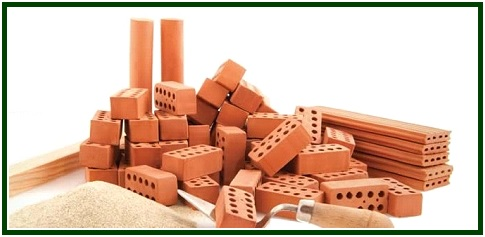
In the Architecture of Theosophy, the
Bricklayer is Responsible for the Construction
Carlos Cardoso Aveline

The microcosm and the macrocosm go together
During the final years of Helena Blavatsky’s life, a theosophical center emerged around her in London where students dedicated to the search for universal wisdom lived and worked.
This austere community had elements of a monastery. Its practical rules for day-to-day material life were published online by the Independent Lodge of Theosophists. There was an atmosphere there whose structure was based on the principle of external simplicity. The inner space of that headquarters contrasted profoundly with the pestilent atmosphere of London, which remains today as one of the capital cities of the misinformed Western materialism. [1]
The rules, very basic, ended with a few essential principles:
“Regularity in life consists of regularity in speech and action, and these cannot exist apart from regularity in thought and feeling. In Practical Theosophy, therefore, it is necessary that these five conditions should coexist: RIGHT THOUGHT, RIGHT FEELING, RIGHT SPEECH, RIGHT ACTION, RIGHT LIVING.” [2]
Can we say that this 19th century experience belongs only to the past? Is it totally lost to the students of esoteric philosophy living in the 21st or 22nd century? The answer to these questions depends on how we look at them.
The word “Monastery” means, in its conventional external meaning, “a habitation of contemplative religious people”. Etymologically the word is related to the idea of “monad”, the One, the Unit. According to the Aurélio dictionary of the Portuguese language (2010 edition) the term comes from the Greek, “solitary residence”.
The inhabitant of a monastery is someone who has decided to have a life dedicated to the direct perception of the divine world. Of course, every spiritual journey needs to coexist with practical, external actions.
Numerous physical tasks are essential to the health and well-being of people and to the maintenance of the place in which they live and contemplate. However, the monastery is not physical. Although material circumstances must be taken into account, the monastery must be an inner reality. It requires a psychological structure, made with correct feelings and thoughts. The ruler and compass are useful moral instruments. The invisible walls of the monastery must be built by each person’s decision. The plumb line is essential. The builder’s perseverance and discipline will be tested.
Just as a turtle takes its residence with it wherever it goes, the seeker of wisdom must have within himself his monastery, his “ashram”, his subtle home, his aura – structured as a temple, and as the present dwelling of his immortal soul.
Within such an auric monastery the pilgrim keeps his dialogue with other beings and interacts with his fellow pilgrims. They are seen as they are psychologically and spiritually represented in his soul. He manages his own attitude so as to maintain a correct atmosphere. The inhabitant of the transcendent monastery is also its construction worker, and more than that. He is the bricklayer, the bricklayer’s assistant and the responsible architect. The construction is permanent and never stops.
At any moment in human history, it is always possible to build a sacred monastery, which will have this or that degree of subtleness and density. Failures and mistakes must be accepted as natural facts of life. They are part of the process, if the construction is authentic. There is no such thing as a changeless definitive perfection. What happens instead is an incessant, gradual building and improvement.
The microcosm and the macrocosm go together. Individual monasteries are as necessary as collective monasteries. Every invisible monastery must be governed by defined rules of conduct, not only on the physical plane, but on the emotional and mental planes. The worker inhabiting the temple must adopt clear goals and establish stable rhythms.
The Universe is a Family
Theosophy can be defined as the art of building. The first object of the theosophical movement is the formation of a nucleus of universal brotherhood. In the 21st and 22nd centuries, communities based on a common ideal and elevated thoughts can be built to bring together students situated in very different places of our planet.
The entire universe is like a family, for it is alive, and it is united by bonds of profound affinity. [3]
On the other hand, our physical families are not just physical. They are the basic spiritual centers of humanity. They are built every day by affection and goodwill. They advance through biological and spiritual lines, and should be seen as sources of happiness and wisdom, including the necessary amounts of suffering and renunciation. Like any family groups, a contemplative monastery must have roots and foundations on the physical plane, and have also to go beyond the three-dimensional reality.
The sensible individual can see the entire universe in all its parts. Every good monastery points primarily in the direction of the highest consciousness in the universe. A lucid worker knows first-hand that the essence of the cosmos is present in every atom, and can be found any time in every soul, in each grain of sand.
NOTES:
[1] The atmosphere of London city, UK, was already defined as “pestilent” by a Master of the Wisdom in the 19th century. The word “pestilent” refers to both physical and moral decay – and diseases. See Letter XXVIII in “The Mahatma Letters”, page 210. Important as it is, this is not the only classical reference to the anti-spiritual aura of London. In one of her most important works, Helena Blavatsky mentions London while discussing the impact of environmental pollution of big cities on one’s spiritual life. Click and see pp. 211-212 of volume I, in the original edition of “Isis Unveiled”. The specific reference to “smoky and foggy London” is by the middle of page 211. HPB’s approach to the problem is also available as an independent article: “The Ecology of Human Consciousness”. If the situation in big cities was serious in the 19th century, the problem it is easy to infer that it is still worse in the 21st century than in Blavatsky’s time. In a contaminated environment and unfavorable atmosphere, the education and the strengthening of one’s will are central decisive factors.
[2] Click to see the text “Rules of a Theosophical Headquarters”.
[3] On the family life of celestial bodies, see for example the classical book “Dialogues of Love”, by Leone Ebreo, University of Toronto Press, Toronto-Buffalo-London, copyright 2009, reprinted 2016, 440 pages. The same Portuguese Jewish author is known as Judá Abravanel or as Leão Hebreu in Portuguese; and as Leon Hebreo in Spanish. Some of the English language editions of his writings also call him Leon Hebreo, as in Spanish. He was born in Lisbon by 1460.
000

The article “The Invisible Monastery” was published in the websites of the Independent Lodge of Theosophists on 7 April 2024.
000
Read more:
* Everything is Constructed in Silence (by António Ramos Rosa).
Click to see other texts by Carlos Cardoso Aveline.
000